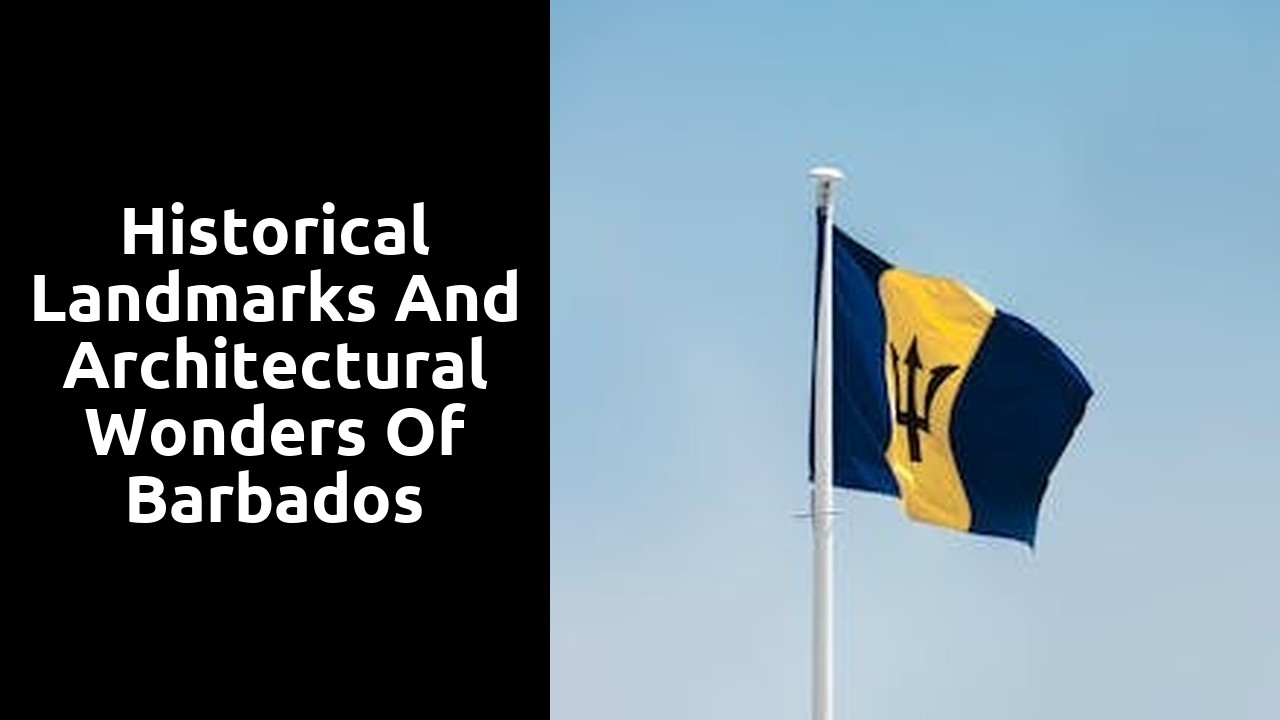

Barbados' rich architectural heritage is a testament to its vibrant past and the influence of various cultures that have shaped the island over the centuries. From its colonial beginnings to its current state as an independent nation, the architectural landscape of Barbados reflects a harmonious blend of European, African, and indigenous elements.
One of the most prominent architectural features in Barbados is the array of sugar mills that dot the island. These iconic structures, which were once crucial to the island's thriving sugar industry, now serve as reminders of Barbados' colonial past. With their distinctive cylindrical shape and towering height, sugar mills are striking landmarks that attract visitors from around the world. Beyond their historical significance, sugar mills are an architectural marvel, showcasing the technical prowess of the past and the ingenuity of those who toiled in the sugarcane fields.
Barbados, with its rich history and cultural heritage, boasts a plethora of historic structures that paint a vivid picture of the island's past. From the remnants of centuries-old sugar mills to the imposing grandeur of stately mansions, exploring Barbados' architectural treasures is like embarking on a captivating journey through time.
The sugar mills, once the backbone of the island's economy, stand as solemn reminders of Barbados' colonial past. These towering structures, some dating back to the 17th century, were once the heart of bustling sugar plantations. As you stand before the weathered stone walls, you can almost hear the echoes of the enslaved laborers who toiled tirelessly to produce the island's precious "white gold." These mills, now remnants of a bygone era, serve as a humbling testament to Barbados' turbulent history and the resilience of its people.
Barbados, the easternmost island in the Caribbean, boasts a rich architectural heritage that reflects its fascinating history. Tracing the footsteps of Barbadian architecture through time allows us to delve into the island's past and uncover the stories embedded within its structures. From humble sugar mills to grand stately mansions, each building holds a piece of history waiting to be explored.
The architectural evolution of Barbados can be traced back to the 17th century when the island became an economic powerhouse in the sugar trade. The construction of sugar mills, with their distinctive circular shape and towering windmills, became synonymous with the island's landscape. These mills were a testament to the island's prosperity and served as a vital component of the booming sugar industry. Today, they stand as a reminder of Barbados' colonial past and the resilience of its people in the face of change.
Barbados, a small island in the Caribbean, boasts a rich architectural heritage that tells the stories of its vibrant past. From the grandiose sugar mills to the elegant stately mansions, the island's historic structures offer a glimpse into its history and culture. These architectural marvels showcase the craftsmanship and ingenuity of the island's builders, leaving visitors in awe of their beauty and significance.
One cannot miss the iconic plantation houses that dot the landscape of Barbados. These grand mansions, with their distinctive Georgian or Victorian styles, command attention with their symmetrical layouts, spacious verandas, and lush gardens. Many of these houses have been meticulously preserved, allowing visitors to step back in time and experience the opulence and grace of a bygone era. Walking through the corridors of these architectural wonders, one can almost hear the whispers of the past and imagine the lives of those who once inhabited these grand residences. The attention to detail in the craftsmanship and the architectural elements truly make these mansions a sight to behold, leaving a lasting impression on all who visit.
Preserving the architectural heritage of Barbados is a paramount concern for the local government and conservation organizations. Efforts have been put in place to ensure that historic structures are maintained and protected for future generations to appreciate and admire. One such initiative is the establishment of the Barbados National Trust, a non-profit organization dedicated to the preservation of the island's cultural and historical sites.
The Barbados National Trust has been actively involved in acquiring and restoring historic buildings throughout the island. Their efforts have significantly contributed to the conservation of Barbados' architectural treasures. From colonial-era sugar mills to stately plantation houses, the National Trust has successfully restored these structures to their former glory, allowing visitors to immerse themselves in the island's rich architectural history. Their work also extends to the ongoing maintenance and upkeep of these buildings, ensuring that they continue to stand as proud reminders of Barbados' past.
Nestled among the lush landscapes of Barbados lie hidden gems of architectural beauty that showcase the island's rich history and cultural heritage. From quaint chattel houses to majestic plantation estates, these treasures offer a glimpse into the island's past and serve as reminders of Barbados' colonial influences.
One such hidden gem is the St. Nicholas Abbey, a plantation house that dates back to the 1650s. This grand estate, with its distinctive Jacobean architecture, has been meticulously preserved and offers visitors a rare opportunity to step back in time. The imposing building, complete with its elegant gables and ornate chimneys, stands as a testament to the island's sugar cane industry and the opulence of plantation life. Inside, visitors can explore the historic interior, adorned with antique furniture and fine artwork, and learn about the legacy of the plantation and its role in shaping Barbados' history.